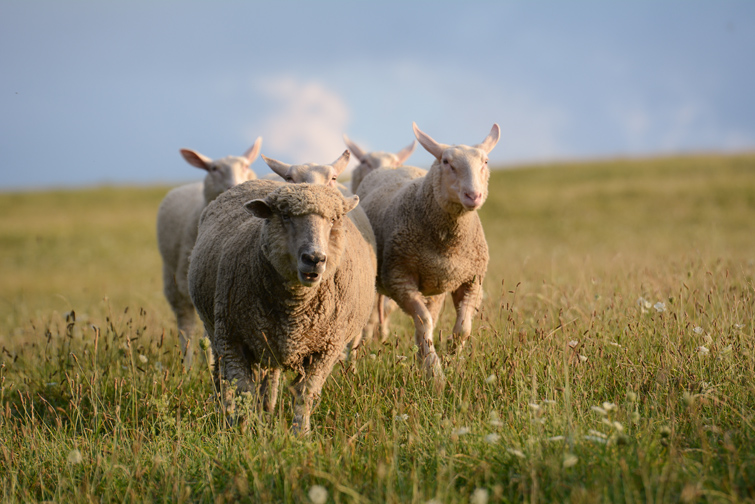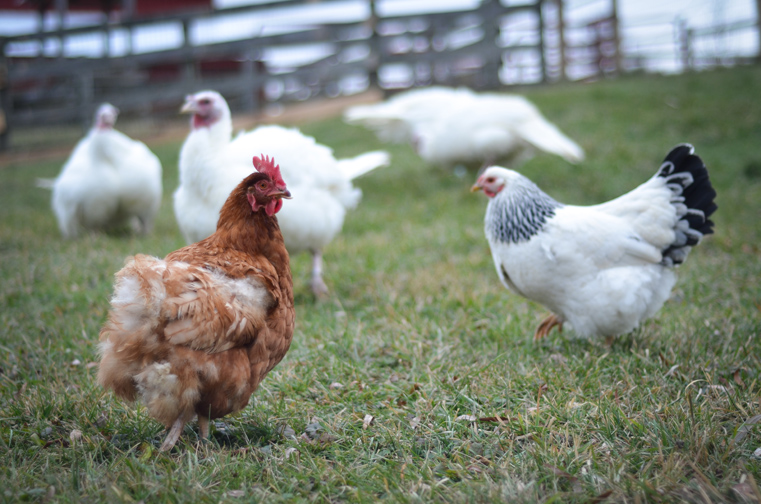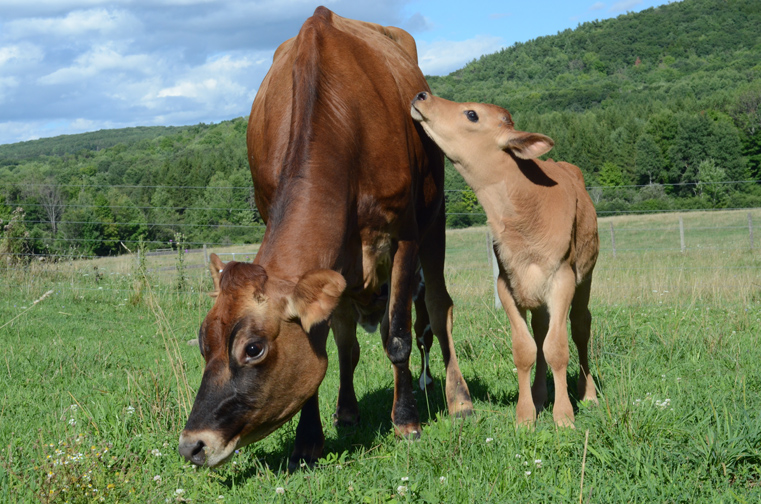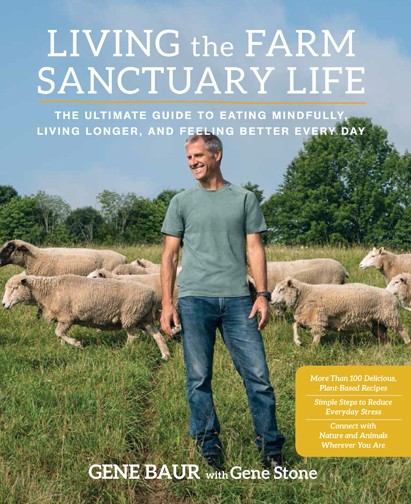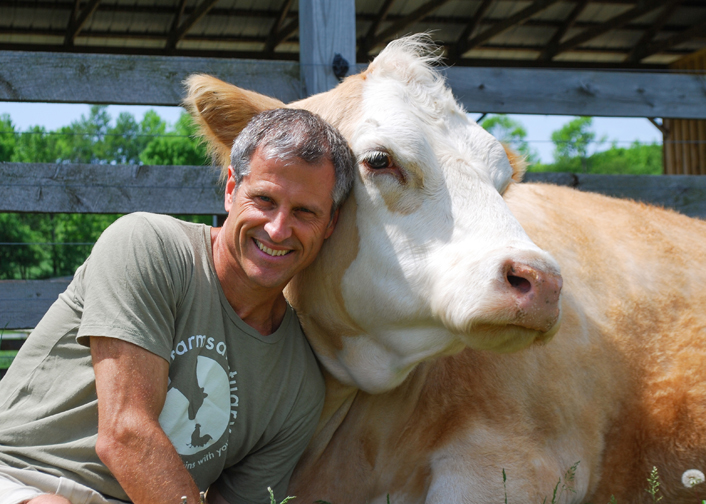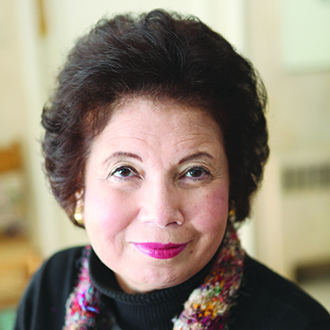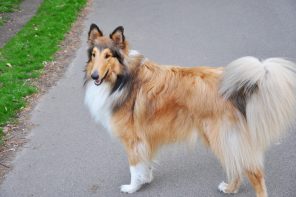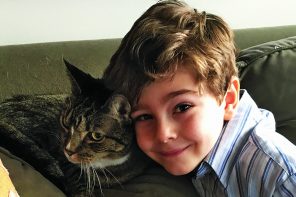A drive through the bucolic Finger Lakes region of upstate New York reveals beautiful vistas of rolling hills and fields dotted with spacious farms, tidy outbuildings and peacefully grazing farm animals in well-kept pastures.
This is the good side of raising farm animals. But there is another, darker side, one of animals living in cruel and inhumane conditions that do not bear describing here.
Farm Sanctuary was founded in 1986 by Gene Baur and Lorri Houston as an animal protection organization to advocate for mistreated farm animals. Originally started in the backyard of a row house in Delaware, it eventually moved to Watkins Glen in the Finger Lakes region as the first large-scale shelter specifically for farm animals. Most were being raised for meat.
Today, Farm Sanctuary houses more than 500 cows, pigs, sheep, rabbits, goats, chickens, ducks, geese and turkeys on 175 acres. Since its founding, the organization has expanded to two other sites, a 300-acre sanctuary in Orland, California, and a third near Los Angeles.
Farm Sanctuary is currently working with animal rights supporters Jon and Tracey Stewart — he of “The Daily Show” fame — to open a farm and education center next year in Colts Neck, New Jersey.
The nonprofit boasts more than half a million members and supporters nationwide, including Alec Baldwin, Ellen DeGeneres, Natalie Portman and Ryan Gosling, among other celebrities.
FOUNDER’S MISSION
Baur started Farm Sanctuary not only to help end cruelty to farm animals but to change the way society views and treats them. According to Farm Sanctuary spokeswoman Meredith Turner-Smith, he has been hailed as “the conscience of the food movement” by Time magazine and was recently selected by Oprah Winfrey to join her Super Soul 100 dream team of “100 awakened leaders who are using their voices and talent to elevate humanity.”
“Gene was a pioneer in undercover investigations and instrumental in passing the first U.S. laws to ban inhumane factory farming practices,” Turner-Smith says. “Since 1986, he has traveled extensively, campaigning to raise awareness about the abuses of animal ‘agriculture’ and our cheap food system.”
Baur has written two national best-selling books — “Farm Sanctuary: Changing Hearts and Minds About Animals and Food” and “Living the Farm Sanctuary Life: The Ultimate Guide to Eating Mindfully, Living Longer and Feeling Better Every Day.”
He has a master’s degree in agriculture and economics from Cornell University and is a faculty member at the Johns Hopkins Bloomberg School of Public Health. He has been a vegan since 1985 and recently started competing in marathons and triathlons, including an Ironman competition, to demonstrate the benefits of plant-based eating.
VISITING FARM SANCTUARY
The Watkins Glen sanctuary is the largest of the three operations run by the group. In an ideal world, there would be no need for farm sanctuaries because there would be no factory farms or stockyards. Farm animals would be free to roam in their pastures, sleep in the sun, birth their offspring and live out their lives. Unfortunately, the inhumane abuse and warehousing of millions of farm animals every day is largely off the radar screens of the general public.
The Watkins Glen Farm Sanctuary had 6,400 visitors last year, and Michelle Waffner, director of visitor experience, says many people who came had their eyes opened for the first time to what it means to be a farm animal, for better or worse.
“Starting in May, we offer visitor days featuring guided tours and the chance to interact with our farm animals,” she says. “Last year we even rescued two donkeys.”
Waffner adds that visitors can take the one-hour tour, go to the Visitor Center and then are free to walk the well-kept grounds. “Our staff will escort them into our many barns and outbuildings to meet animals we have selected because they like to interact with people. We put the needs and personalities of the animals first. Many of them just love the attention they get from our visitors.”
All of the animals are free to go outdoors into large pastures once they have spent enough time inside. The cruel confinement and unsanitary conditions of a factory farm becomes a thing of the past for them.
“One thing that surprises our visitors who are not familiar with farm animals is they see they actually have personalities,” Waffner says. “People are usually quite shocked to hear of the horrible conditions they came from and amazed at how they have recovered under our care.”
To help celebrate the lives of rescued animals and to provide special accommodations for visitors, Farm Sanctuary has built three Tiny Houses on the Watkins Glen property. The houses are about 380 square feet in size and contain a queen size bed; futon; kitchenette; TV with DVD player; bathroom with shower; washer and dryer; Wi-Fi; and inside and outside sitting areas.
Each house is named after special members of the Farm Sanctuary family — Marjorie the goat; Amy the sheep; and Turpentine the turkey. Each Tiny House includes the personal story and photos of the namesake animal.
Amy the sheep was found locked in a dark barn with 47 other sheep, emaciated and dehydrated, with no access to food or water. Farm Sanctuary was able to secure their release before it was too late. Despite her cruel past, Amy has come to trust again. She is one of many sheep at the sanctuary that, if you are quiet and patient, will happily approach you for a good pat.
Marjorie the goat was left with her herd to fend for themselves for weeks. When Farm Sanctuary came to the rescue, they were in desperate need of food and veterinary care. Marjorie was pregnant and gave birth to her son, Gabriel, at Farm Sanctuary, where she has had the chance to raise him in peace and safety for the rest of their lives.
Turpentine the turkey lived on a farm where he was being raised for Thanksgiving dinner. As luck would have it, a Farm Sanctuary supporter lived next door and became friends with him, gobbling back and forth through his fence.
The friendship became Turpentine’s saving grace when the farmer experienced a change of heart and released him to the Sanctuary. Turpentine immediately “learned the ropes” and became a Sanctuary leader, following caregivers and keeping tabs on anything of interest. His personality has made him an outstanding ambassador for turkeys, leaving a trail of smiling humans wherever he goes.
Farm Sanctuary holds special events during the year and the first, the Pignic, is scheduled for June 3. Despite the name, it will feature a vegan menu along with time with the animals, tours, crafts and games for the kids. Advance reservations are required for housing and events.
For more, visit farmsanctuary.org.

